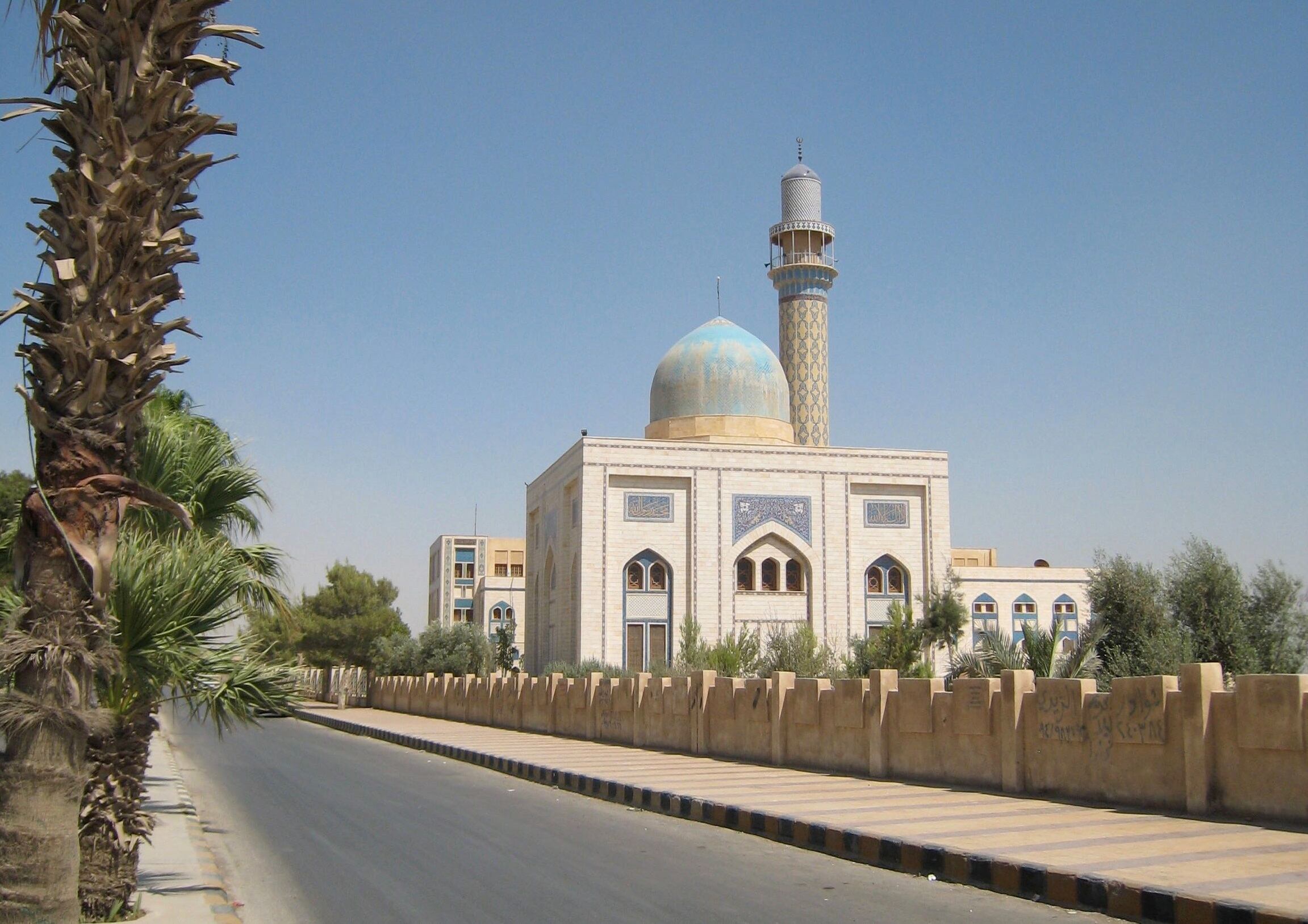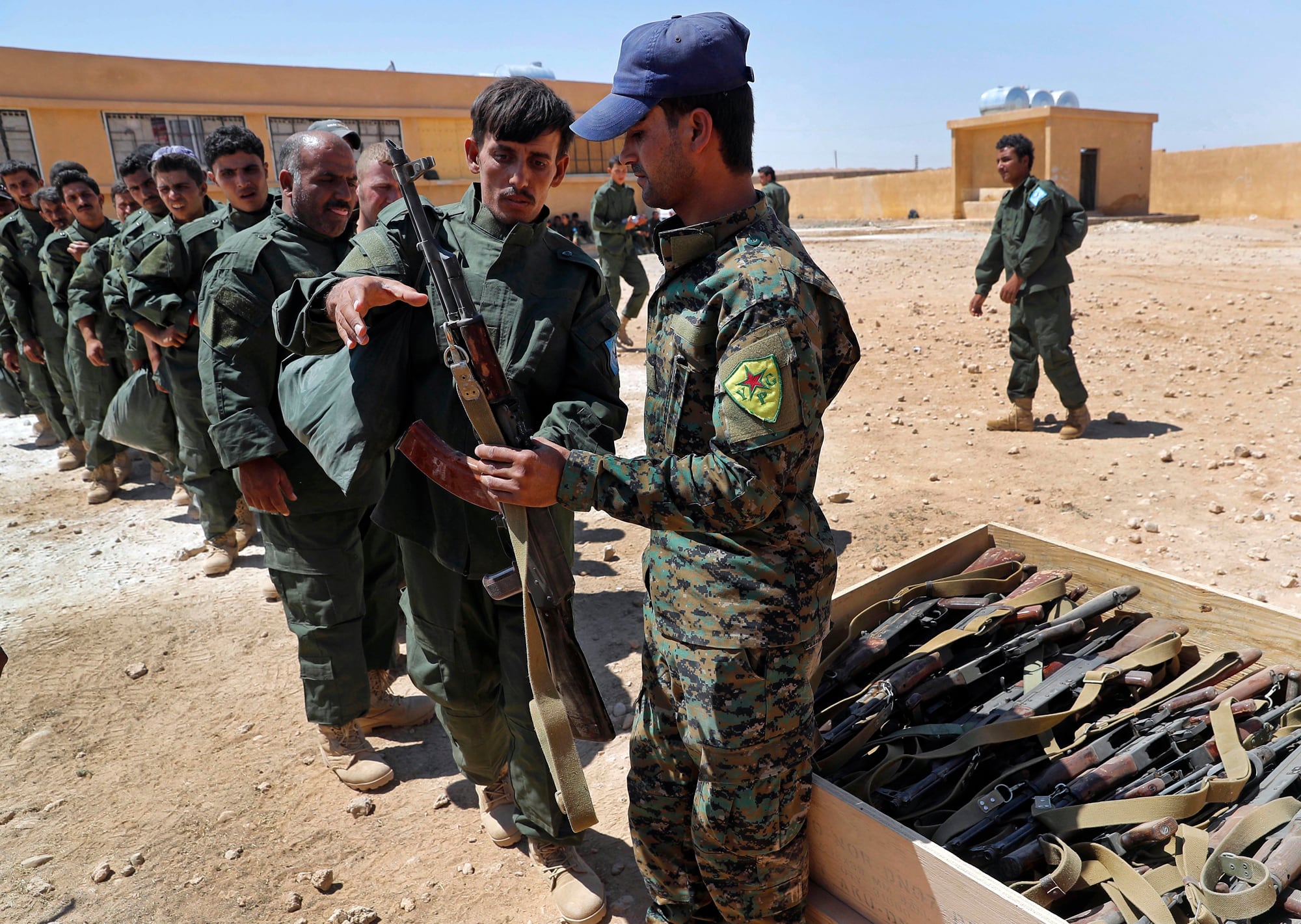Editor’s note: The following is an opinion piece. The writer is not employed by Military Times and the views expressed here do not necessarily represent those of Military Times or its editorial staff.
Despite heavy fighting nearby, the historic Baghdad Gate, or Bab Baghdad, still stands in the southeast corner in the old city center of Raqqa, Syria.
For centuries, the diverse population of Raqqa, visitors, merchants, and Christian and Muslim pilgrims all passed through this 10th-century monument — one of only a handful of cultural sites that have survived ISIS’s brutal control of the city.
On July 4, the Baghdad Gate and its neighboring historic city-wall were the front line in the offensive to liberate Raqqa, and the Defense Department took commendable action to minimize damage to this site while providing air support.
Liberating and protecting civilians is the primary purpose and first priority in the U.S. airstrikes, and in the U.S.-backed ground push by the Syrian Democratic Forces, or SDF, to free Raqqa. While the battle against the Islamic State intensifies, coalition forces are mindful of the importance of Raqqa’s heritage sites, sites that represent the world’s shared heritage.
The strategic advantages at the confluence of Euphrates and Balikh rivers have long interested humans; archaeological excavations suggest that villages were established in the area by 6,000 B.C. As the rivers shifted, so did human habitation — first at Tell Zeidan, later at Tell Bia, and in approximately 300 B.C., the city of Raqqa was founded.
In 796 A.D., Harun al-Rashid made Raqqa the seat of the Abbasid Empire. The city’s political reach stretched from central Asia to northern Africa. In Raqqa, the Abbasids built extensive palaces, mosques, residences, elaborate gates and defensive walls, many of which are still visible as ruins.
The Old City of Raqqa, also known as Ràfiqa, was nominated to the World Heritage Tentative List in 1999 and is best known for brick monuments such as the al-Mansour Mosque, built in 772 AD, and the “Castle of the Maidens,” or Qasr al-Banat, built in the 1100s.
Heritage sites carry potent political significance; as soon as ISIS began gaining control in Raqqa, it targeted cultural sites for destruction. In March 2013, ISIS bombed the Raqqa shrines of Uwais al-Qarani, Obay ibn Qays, and Ammar ibn Yasir, and later bulldozed the associated mosque. The next year, ISIS bulldozed an Ottoman-period shrine in the courtyard of the al-Mansour Mosque.

It is estimated that in Raqqa, ISIS has destroyed all the Shia mosques and Christian churches. Historic and ancient artifacts have also been targeted. In Raqqa, as in Palmyra and Mosul, the group’s intentional destruction of cultural sites is an attempt to obliterate a people’s history and identity, and is a violation of human rights.
Raqqa’s main Abassid-era defenses were two mudbrick city walls enclosing the horseshoe-shaped old city center. Damaged in a few areas by ISIS widening roads and creating shortcuts, the massive inner wall remains a boundary today and became central in the Raqqa offensive, when ISIS booby-trapped the heritage site with explosives.
A July 4 news release from U.S. Central Command detailed two airstrikes in response that cleared the way for the advancing SDF but damaged 25 meters of the city wall’s approximately 2,500-meter-long ruins. Evident in the language of this release and preliminary satellite assessments is that effort was made by the U.S. to minimize damage to Raqqa’s historic city wall. We hope to see that effort continue.
RELATED

The relevant international law, the 1954 Hague Convention on the Protection of Cultural Property in the Event of Armed Conflict, obligates member-states to refrain from targeting cultural sites except in cases of military necessity or when another force uses it first. The U.S. has been party to the 1954 Hague Convention since 2009, and in the American-led intervention against ISIS, US airstrikes have taken cultural sites into consideration assisted by an inventory provided by the U.S. Committee of the Blue Shield, or USCBS, and Smithsonian consultation.
Additionally, experts from the Smithsonian, University of Pennsylvania, USCBS and the Combatant Command Cultural Heritage Action Group have published a pocket booklet, “Guide to Raqqa Heritage,” that will be distributed to those advising and assisting the forces liberating Raqqa.
Cultural sites in the direct line of fire are not the only heritage at risk. As the SDF gains ground, the coalition supporting it bears continued responsibility to ensure that museums, archaeological sites, monuments, archives, cemeteries and religious sites are respected and protected.
In the immediate aftermath of armed conflict, alleviating human suffering is paramount. However, when focus shifts to rebuilding civil society, heritage sites that remain will be crucial in building an inclusive physical landscape that reflects Syria’s diverse and important heritage.

Katharyn Hanson, who holds a doctorate from the University of Chicago, is an archaeologist and a fellow at the Smithsonian’s Museum Conservation Institute.
Katharyn Hanson, who holds a doctorate from the University of Chicago, is an archaeologist and a fellow at the Smithsonian’s Museum Conservation Institute.









